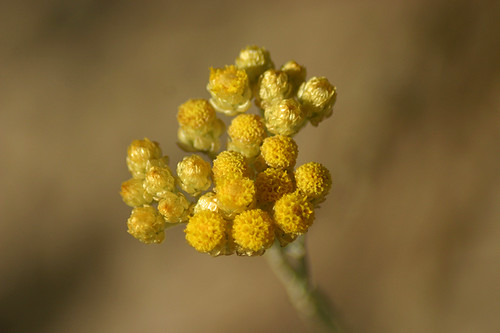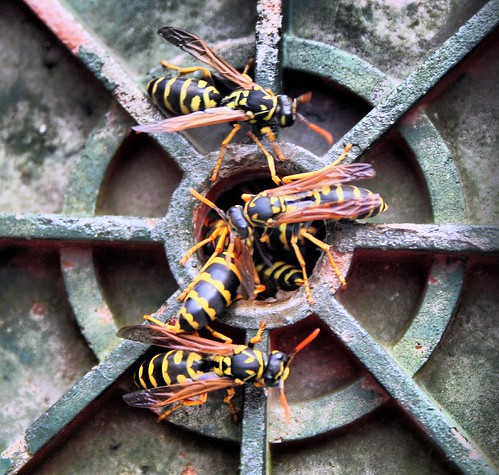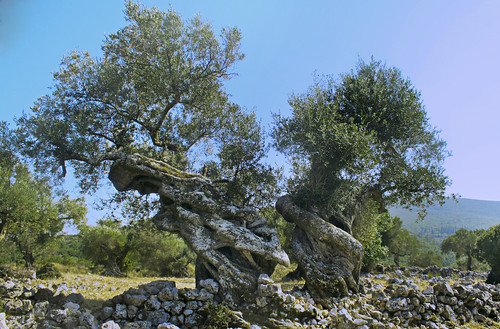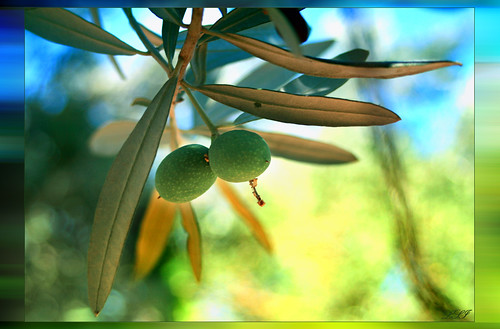Best of 2009

Oh, what a year! It was definitely a good year for perfumery, with many new perfumes that are worth writing about. 2009 was also an overwhelmingly busy year for me in every possible way - both professionally and personally. A lot of work, a lot of travel and a lot of change. I can't say that I had a chance to test even a minuscule amount of the many fragrances that came out this year. The opposite problem from last year, when I had to scrape the bottom of my memory to put together a list...
Favourite New Perfume:
Si Lolita. I enjoy every sweet pea and spice moment it has to offer. I think I will be running out of this one about as fast as I did with L from the same house. The elemi note in here is so wonderful!
Funnest packaging:
Si Lolita. Excuse my repetition but it’s true. The bottle is whimsical,

Best Sequel of the Year:
I was intentionally ignoring those, so no comments this year. I find it disconcerting that the Harajuku Lovers Snow Bunnies smell the same but have different outfits. I think that’s outrageous.
The Classic Discovery of the Year:
Eau d’Hermes. With its sultry, slightly salty culinary cumin and lemon on top of immortelle and jasmine this scent refreshingly unique and timeless.
Favourite New Niche Perfume of the Year:
Emotionelle by Michel Roudnitska, has a gorgeous melon or rather cantaloupe note paired with sultry jasmine and sensual violets. It’s hard to believe these will get along, but they sure do. And the result is magical, a little disturbing, like striking the right chord in the right time. It reminds me of the warm sun settling in the west after a hot spring day in Southern France.

I also really enjoyed Champaca Absolute, even though I find it a tad too artificial to my taste. But it certainly made 2009 more bright and cheerful.
And than of course there’s also Manoumalia, which won my heart long ago when the year has just began…
Note of the year:
Cantaloupe. It keeps attacking me from every possible direction, and every time I fall in love with it again. I’m yet to post a full blog about it and why this all happened, but it has a lot to do with my visit to Grasse in May.
The other note I paid more attention to this year which I also work with is tobacco. I love it and am glad to find more layers to it than I have before – both when formulating with it and when experiencing it in perfumes. I enjoyed a few tobacco scents this year - Gabriel's Aunt Bohem candle, Tabac Aurea by Sonoma Scent Studio and Field Notes from Paris by Ineke.

The Surprise of the Year:
Hermèssence Vanille Galante. Who would have thought that a scent with such a name will smell like lilies, cantaloupe and salted caramel?! I thoroughly love it.
The Re-Discovery of the Year:
I absolutely love Bois des Iles. I worn it a lot this year, and it is more versatile than I imagined.
This Year's Change-of-Heart:
Clary sage. I used to not be able to stand this note and now, after shaking hands with it in person in Grasse, France I noticed its similarity to bergamot and tea, I am truly enjoying smelling it on its own and working it into some of my compositions.

Ambivalent Entries:
Sweet Lime & Cedar Smells either exotically fresh and invigorating with the kaffir lime, coconut and cedar; or too artificial, tame and Westernized with the gardenia and musk taking over, as if shutting the kaffir lime notes so they don't get too weird.
Private Collection Jasmine White Moss first smelled amazing, like an old classic expansive fresh-chypre; but than smelled too flat and synthetic. A few more wearing will seal my final verdict.
A Scent by Issey Miyake is a little odd, and has something special about it. It is how I would imagine a tea garden to smell at the top of a mountain. But than it also smells quite sharp, too sharp; or other times it feels too floral and perfumey... I still can't decide if I like it or not. And I feel the same way about the bottle - it's clean-cut but also a little too cold and crude.
Celebrity Fragrance Release:
I was conveniently ignoring those most of the year. But I did enjoy Sarah Jessica Parker’s Twilight. An ambery floral, with an incense and frangipani feel to it. It’s warm and diffusive and a little too synthetic to my taste. Yet I wish it was launched on its own to get more attention rather than along with those two generic meh scents it was surrounded with (and probably were a lot more popular too).
Favourite New Natural Perfume:
Scent Systems’ Oeillet was launched in 2006. But I didn’t try it till this year, so to me it’s completely new. I’m mentnioning it here because I think it’s one of the most stunning natural perfumes that can be found in the world today. Dusky, salty and sensuous in a surprising way and nothing like what you’d expect from a scent that has the name carnation all over it.
I also quite enjoyed Demeter's Vintage Naturals, even though none was extremely surprising or original they were all well-done. My picks would be Vintage Naturals Mimosa, which is more of a white floral; and Vintage Naturals Geranium.
Favourite New Perfume for Men:
Field Notes from Paris by Ineke, although it is just as gorgeous on a woman (I love wearing it myself) is the best new scent that men can enjoy from this year releases.
The Ugly Duckling of the Year:
Cannabis Rose by Fresh. It's not as pretty as its sisters from the same genre (Narciso Rodriguez for Her or Lovely), but it has an edge to it. It's interesting and it's more patchouli than rose.
The Disappointment(s) of the Year:
Coming back from Paris only to discover that my Sous la Vent bottle cracked… Thankfully, I was able to save the jus.
As far as perfume releases go, I was disappointed of
Narcisso Rodriguez’ Essence, which comes in a disturbingly intriguing bottle but smells like an old aldehydic fragrance that was stuck on the shelves for too long.
Also, Nuit de Cellophane turned out to smell like shampoo, rather than osmanthus. But my Japanese friends told me that osmanthus in bloom smells kind-of artificial actually… Yet in a most beautiful way. I am yet to discover this for myself.
Favourite Scented Body Product:
J.R. Watkins Lemon Cream smells like lemon wafers and is rich and smooth yet fast absorbing. The shea butter gives it a heavenly quality. And did I mention that the scent is just to die for?
 I’m also still smitten with the summery Terracotta Eau Sous La Vent
I’m also still smitten with the summery Terracotta Eau Sous La VentAnd last but not least - Velvet & Sweetpea's Tuberose & Gardenia Whipped Body Frosting, hand-whipped by Laurie Stern herself.
Best Organic Skin-Care Line:
New Zealand based Carol Priest creates hand-made organic skin care that has the right consistency, texture and scent. I’m particularly enamoured with a few of them. The lavender and active manuka honey facial cleanser leaves the skin soft and seems to melt away make up residues. The rosehip and vitamin E regenerative night cream is rich but easily absorbed into the skin and although it does not seem to have an impressive scent from the jar, it turns into a wonderful Melissa (lemon balm) scent once applied to the face, which helps me fall asleep… The jasmine floral tonic water spray is cheerfully refreshing, and the marshmallow root day cream
which smells beautifully of jasmine as well. The line is free of parabens and synthetic chemicals, and mostly seems to be scented with pure essential oils only (I’m a little confused about a couple of the products which indicate “fragrance” as an ingredient – the rose body lotion is one example).
Favourite Scented Candle:
I’m partial to my own candle line (Bois d’Hiver in the winter time and ArbitRary in the summer time). This year, Gabriel’s Aunt Lemon Bar by Gabriel’s Aunt (who also hand-pours my own candles) captured my attention and satisfied my eternal craving for buttery lemon wafers (here we go again!).

Promising new line:
Maison Francis Kurkdjian
Scents I wish I tried but haven’t yet:
Two new agarwood fragrances: Aoud Leather by Montale and Soivohle’s all-natural Oudh Lacquer (and a few others by Liz Zorn). The list goes on with Ormonde Jayne's Tiare and Andy Tauer's Un Rose Chyprée.
Most Fabulous Fragrant Moment this Year:
 Sitting among the roses awaiting distillation in the rose fields' extraction plant in Grasse, France.
Sitting among the roses awaiting distillation in the rose fields' extraction plant in Grasse, France.Most worn this year:
Bois des Iles
Le Parfum de Therese
Si Lolita
Un Jardin Apres la Mousson
Aveda Key Element Fire No. 3
And my own Hanami and Les Nuages de Joie Jaune in the spring, and Espionage and Ayalitta in the fall.
Read the best of the best for 2009 lists of other participating blogs:
Bittergrace Notes
Labels: Best of 2009, Blogging Events, Emotionelle, Michel Roudnitska

























